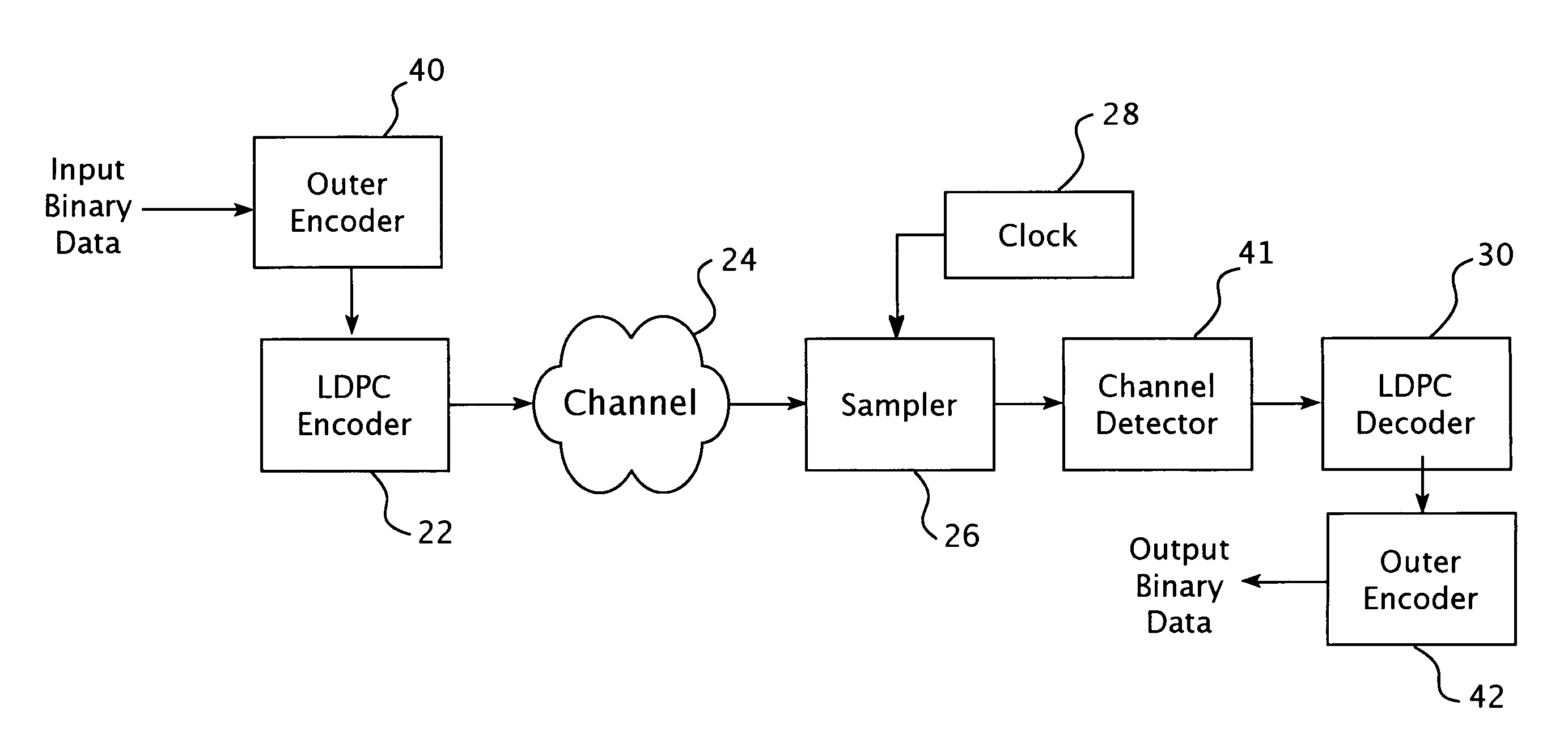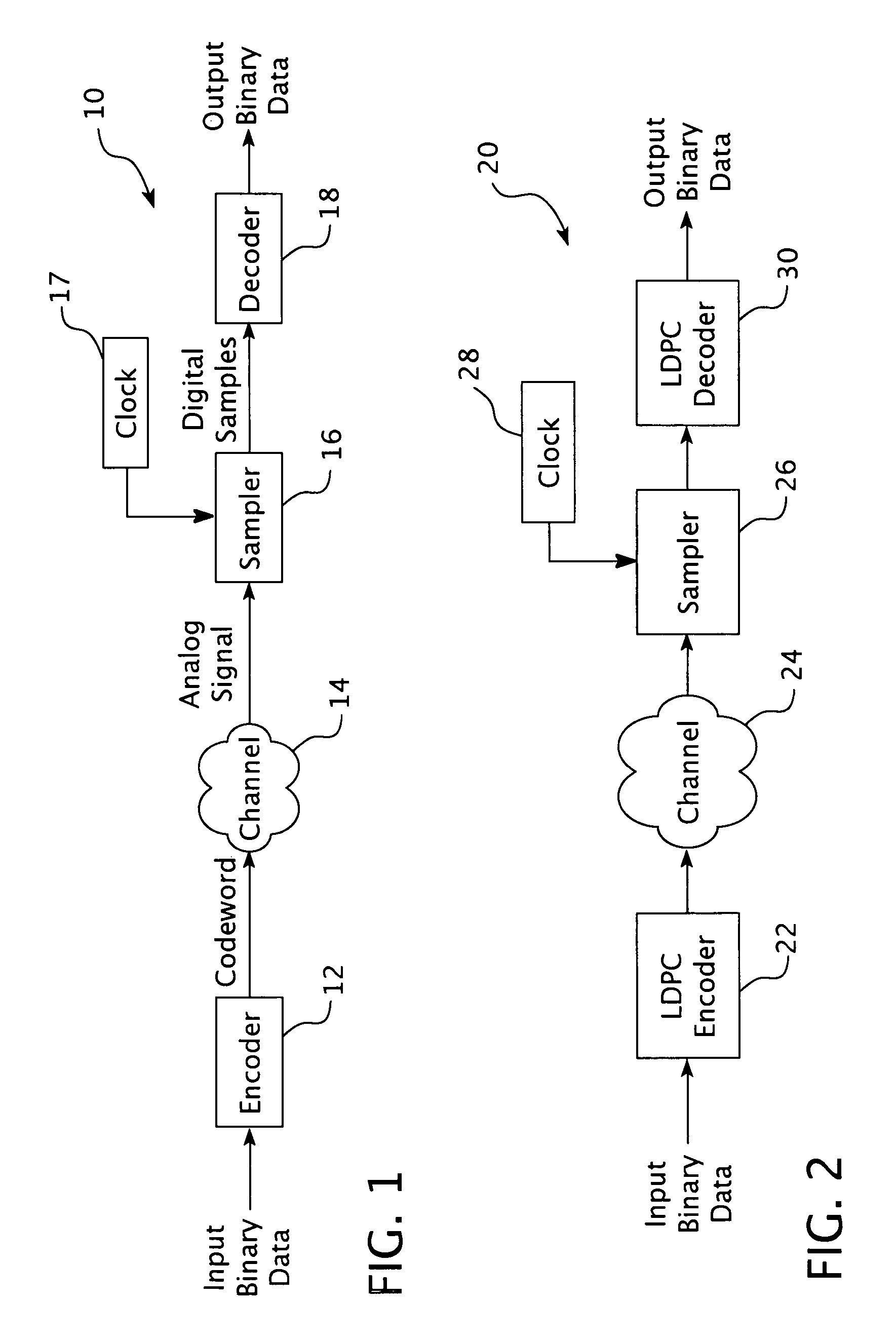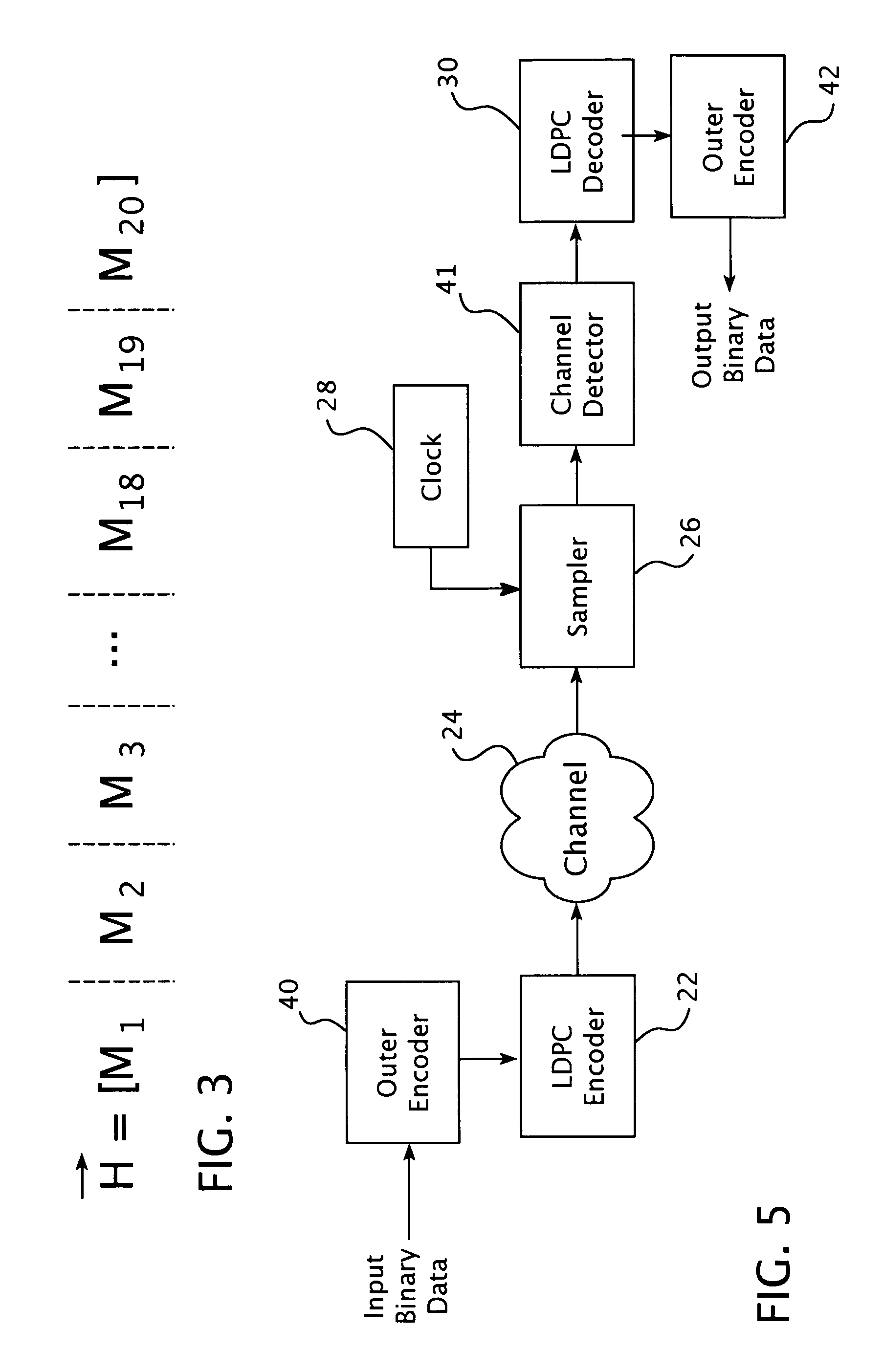Encoding method using a low density parity check code with a column weight of two
a low density parity and check code technology, applied in the field of encoding methods using low density parity check codes with column weights, can solve the problems of inability to achieve the effect of pipelined processing, unpractical techniques, and inability to achieve the effect of ensuring the integrity of data storage applications
- Summary
- Abstract
- Description
- Claims
- Application Information
AI Technical Summary
Benefits of technology
Problems solved by technology
Method used
Image
Examples
example
Construct a Column Weight j=2 LDPC Code with k=4, Girth g=12.
[0070]Step 1. Find a primitive element α for the GF(k−1=3). Easy to check α=2 is a primitive element for GF(3).
[0071]Step 2. Construct 3×3 matrices Q1 and Q2 as follows:
[0072]Q1=[147258369]andQ2=Q1T=[123456789]
[0073]Step 3. Form column vector
[0074]ϖi=[ϖi,1ϖi,2ϖi,3]=[02i-32i-2]mod(k-1),i=3,4.
mod (k−1), i=3,4.
Therefore,
[0075]ω_3=[012]andω_4=[021]
[0076]Step 4.
[0077]Q3=Q2Θ[012]=[123564978],
i.e., [5 6 4] is obtained by 1 left circular shift of [4 5 6], [9 7 8] is obtained by 2 left circular shifts of [7 8 9].
[0078]Q4=Q2Θ[021]=[123645897],
i.e., [6 4 5] is obtained by 2 left circular shift of [4 5 6], [8 9 7] is obtained by 1 left circular shifts of [7 8 9].
[0079]Step 5. Make the connections according to the mapping matrices.
[0080]i=1: connect the bit nodes in the 1st group to the check nodes.
Read out the (k−1)2=9 numbers in matrix Q1 column by column, resulting in [1 2 3 4 5 6 7 8 9], and connect the 1st check nod...
PUM
 Login to View More
Login to View More Abstract
Description
Claims
Application Information
 Login to View More
Login to View More - R&D
- Intellectual Property
- Life Sciences
- Materials
- Tech Scout
- Unparalleled Data Quality
- Higher Quality Content
- 60% Fewer Hallucinations
Browse by: Latest US Patents, China's latest patents, Technical Efficacy Thesaurus, Application Domain, Technology Topic, Popular Technical Reports.
© 2025 PatSnap. All rights reserved.Legal|Privacy policy|Modern Slavery Act Transparency Statement|Sitemap|About US| Contact US: help@patsnap.com



